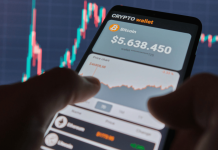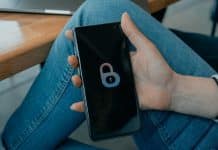For those wondering how to mint an NFT, we’ve got the low down on all the details to get you started on your NFT journey.
Non-fungible tokens, commonly known as NFTs, are digital tokens created with blockchain technology.
They are one of the hottest things on the crypto market. These digital tokens represent tangible and intangible objects like music, art, videos, in-game items, and collectable digital masterpieces with their unique electronic signature.
NFT’s can be bought using crypto. Their popularity has soared recently, with many NFT artists fetching six-figure sums for their work.
With NFTs recording a transaction volume of over $3.4 billion in August this year, it’s no surprise that more and more investors are exploring this option to diversify their portfolios.
For crypto enthusiasts taking a break from online shopping, transacting across borders, or crypto gambling, minting NFTs may be just the ticket to pass your time profitably.
The Rapid Rise Of NFTs
The NFT market has been relatively unexplored until the second half of 2020 when one piece of NFT art sold for a whopping $69 million – a digital artwork called Everydays: The First 5000 Days by the artist Beeple that was auctioned by Christie’s.
That sparked a frenzy as people started waking from their crypto slumber and taking a closer look at how NFTs could add value to their portfolios.
In the past 18 months, NFTs have come on in leaps and bounds. There has been unprecedented interest from those who wish to collect NFT art and collectables and those who want to mint their own NFTs.
So you are still probably wondering how to mint an NFT. Read on as we discover how.
What Is The Value Of NFT Minting?
What is NFT minting all about? It’s a question you probably asked yourself a few times.
Perhaps you think it’s similar to creating a digital coin? If you were, you’re on the right track.
Minting NFTs is the process of creating digital or real-world content that is unique or of a limited edition. Using blockchain technology to create an NFT has its digital signature attached to it.

This means it can be traced directly to its creator, no matter how many owners have passed hands. Moreover, it can only ever have a single owner at a time, and that record of ownership can never be changed – making it valuable and a must-have for those collectors amongst us.
For artists who often draw the short straw for their work, NFTs eliminate the need for undeserving third parties who mediate their sales and instead put artists in direct contact with their buyers.
Moreover, with talks of the metaverse gaining traction, NFTs are a fantastic way to own valuable possessions in the virtual realm, portraying your taste and social status in a digital world.
Such scarcity is valuable, making minting NFT’s a lucrative proposition – something that the world has just woken up to.
Things To Consider Before Minting NFTs
Before we dive into the details of minting an NFT, there are some important things to consider before the minting process starts.
NFT minting, in essence, refers to the process of converting digital art into a part of the Ethereum (or another blockchain) as a public ledger. This converted digital art would not be able to be tampered with and will be immune to any changes or modifications.
Similar to the process of creating coins through minting, adding NFTs to a blockchain is also known as minting.
Minting an NFT will ensure proper representation of your digital artwork and that your item can be flexibly traded or bought on an NFT marketplace.
Moreover, NFTs can track ownership accurately – a big plus for future resale or collection. With that being said, you must consider the following:
Blockchain Platform
When considering how to mint an NFT, you must evaluate the different blockchains that support the NFT token standard and decide on the platform you wish to use for the minting process. The most popular blockchains for minting NFTs include the following:
- Ethereum
- Polkadot
- Binance Smart Chain
- Tron
- EOS
- Tezos
- WAX
- Flow by Dapper Labs
- Cosmos
NFT Ecosystem
This entails being aware of all NFT capabilities on the blockchain that you have chosen. You must ensure that the platform of your choice can support the transfer and sales of NFTs on other blockchains.
As a creator of NFTs, you must take a holistic view of the pros and cons of each NFT ecosystem with each blockchain.
Cost-Effectiveness
The next factor you must consider is finding the most cost-effective way to mint your NFT. Many people who decide to create an NFT are first-timers exploring this brand-new environment. It may plausibly be the case that they are looking at how to mint an NFT for free – with popular blockchains being their go-to platforms, i.e., Ethereum and Binance Smart Chain.
NFT Marketplace
Another crucial factor to consider is the choice of NFT marketplace for creators. Platforms like Ethereum and Binance Smart Chain offer NFT creators the largest NFT marketplaces to sell their masterpieces while providing additional exposure to buyers.
Regarding the Ethereum blockchain, NFT creators will have access to a comprehensive collection of NFT platforms, including established ones like Rarible, Mintable, and Opensea.
With Binance Smart Chain, NFT creators can use Juggerworld, Treasureland, and BakerySwap.
How To Mint An NFT – The Process
Now that we’ve covered the most important dynamics of non-fungible tokens, it’s finally time to find out how to mint an NFT. Let’s dive into creating NFTs and trading them on blockchain platforms.
Creating An Asset
Creating an NFT always starts with making the asset that it represents. You must give it your all and create a piece of innovative and appealing artwork – something you would want to buy.
Considering how advanced our technology is, the digital age offers many opportunities and choices with several exciting digital themes and media – 3D Illustrations, abstract, audio, political, whimsical, and hyper-realistic – to name a few.
The beauty of dabbling in NFT creation is that you can find a buyer for almost any type of artwork. You can only take inspiration from The First 5000 every day or the CryptoPunk 7804 to realise how your imagination can lead to untold riches through the virtual realm.

Purchase Ether
Considering most NFT development projects are on Ethereum, you will need to buy some Ether.
For our illustration, we will assume that you will do what most NFT creators do and use Ethereum as your choice of blockchain for creating your NFT. When minting art as an NFT, you generate documentation about that piece of art on the blockchain.
That documentation could conceivably indicate the wallet address of the artwork’s creator – an unmistakable mark of ownership in the form of a digital signature. This record cannot be changed or deleted.
The sales that follow from creating your artwork cannot affect your identity as the original owner and creator.
If that isn’t enough, it also features accurate records of every owner of that piece of artwork and offers public access to that record so that everybody on the blockchain can see it.
To create such a record for your NFT creation, you will need to pay for that transaction, in all likelihood, with Ether.
Gas fees fluctuate considerably based on the demand for creating transactions on the blockchain. With this in mind, you now know why you need to purchase Ether – to make payments for gas before minting NFTs.
Create A Non-Custodial Ethereum Wallet
While many creators would love to know how to mint an NFT for free, the reality is that you must have Ether to add your art as an NFT to the Ethereum blockchain.
Once your NFT is listed, you then have many opportunities to sell your artwork. This is precisely why you will need a non-custodial wallet.
A non-custodial wallet is a specific type of crypto wallet that allows total control over your funds. Essentially, it is an account to store and transact with crypto safely.
You must remember that a non-custodial wallet differs from wallets that fall under the management and ownership of a centralised crypto exchange.
Non-custodial wallets help NFT creators access the seed phrase – a randomly generated 12-word combination that will help back up that wallet alongside access with multiple devices and platforms.

With this in place, NFT creators can go about their business cost-effectively without restrictions on accessing their funds through exchanges.
You must be aware that you have total responsibility for this, and you could lose all your funds if you lose the seed phrase.
Some popular mobile non-custodial wallets include Rainbow and Coinbase Wallet, while laptop users can use MetaMask.
Set Up The Non-Custodial Wallet
To set up the non-custodial wallet for optimised NFT minting, you will need to follow the steps below:
- Access the www.metamask.io website and install the chrome extension.
- Click on the “Create a Wallet” button on the right-hand side of the page.
- Create a password – note that this password is not your seed phrase.
- Copy your seed phrase and store it in a safe and retrievable location. You must remember that the seed phrase is vital in NFT creation, and losing it may mean you won’t be able to access your funds.
- Finalise the setup process.
Transfer Ether To The Non-Custodial Wallet
Once the non-custodial wallet is set up, you can move some Ether into the wallet. The wallet address is like your bank account number that you will use to send and receive crypto.
For those who will use Metamask, you can copy the wallet address from the page dashboard – convenient and easy!
Choose An NFT Marketplace
When pondering the cheapest way to mint an NFT, you must find the most suitable platform for the minting process.
With that in mind, an NFT marketplace is just as essential as the process of NFT minting.
The most popular NFT marketplaces are OpenSea and Rarible. With OpenSea, users don’t have to pay minting fees for every new NFT creation and only pay for the first time when setting up their collection.
The buyers of your NFT will compensate for the gas fees of that transaction. Once your NFT is minted, it goes into your wallet and allows you to sell it at the marketplace of your choice. While minting on one platform and selling on another can be done, it’s best to use a single platform for this process.

Create Your NFT
Finally, you clean your digital hands by minting your own NFT.
This step is very easy, and the many platforms available for NFT minting have made the process simple. By using OpenSea as our example, the typical steps to minting an NFT are as follows:
- Access the www.opensea.io website and click Create.
- Read the Message portion of the signature request to confirm that you choose the correct action.
- The minting process on the OpenSea NFT marketplace is called lazy minting. It entails NFT minting as part of a collection. You can click on Create in the My Collections section, then add a collection name, description, and logo. NFT creators have the flexibility to include many NFTs in their collections.
- You can add new items to your NFT collection on the OpenSea NFT marketplace. Click on Add New Item, upload the high-quality artworks you have created, and give them a name alongside external links, descriptions, and properties before clicking on Create.
Simple as that – you are now the owner of a unique NFT!
Final thoughts
When you consider how to mint an NFT, you can see that it is relatively straightforward.
Be careful about the initial requirements, especially planning and preparation.
While creating NFTs can be a gratifying experience, you must approach the minting process with the recommended best practices to facilitate the most cost-effective NFT minting.
The most important thing is to let your creative juices flow, let your vision manifest into a digital masterpiece, and leave a virtual legacy that will last a lifetime. Good Luck!
















